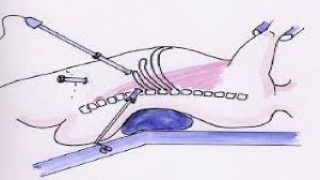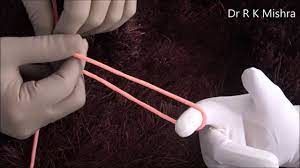Unilateral eTEP-TAR: Laparoscopic Solution for Large Incisional Hernia
Add to
Share
21 views
Report
2 days ago
Description
The Unilateral eTEP-TAR (Extended Totally Extraperitoneal – Transversus Abdominis Release) represents one of the most advanced and effective minimally invasive approaches for managing large incisional hernias. At World Laparoscopy Hospital (WLH), Gurugram, under the expert guidance of Dr. R. K. Mishra, this complex procedure is performed with precision and finesse, combining innovation, anatomical understanding, and surgical expertise. Introduction to eTEP-TAR Technique The eTEP-TAR technique is designed to provide wide and tension-free reconstruction of the abdominal wall by accessing the retrorectus and preperitoneal planes without breaching the peritoneal cavity. It merges the benefits of the eTEP (Extended Totally Extraperitoneal) approach with the posterior component separation achieved through Transversus Abdominis Release (TAR). This technique is particularly indicated for large or complex midline incisional hernias, where conventional laparoscopic IPOM (Intraperitoneal Onlay Mesh) repair may not provide sufficient overlap or may lead to high recurrence rates. Step-by-Step Surgical Technique at WLH 1. Patient Positioning and Preparation The patient is placed in the supine position with both arms tucked. After induction of general anesthesia, the abdomen is prepared and draped. Pneumoperitoneum is avoided initially, as the dissection remains in the extraperitoneal space. 2. Port Placement and Entry Using a small infra-costal incision on the unilateral side of the hernia, the surgeon enters the retrorectus plane with blunt dissection. A 10 mm optical trocar is inserted, and CO₂ insufflation creates an extraperitoneal working space. Additional 5 mm trocars are placed under vision to complete a three-port configuration. 3. Retrorectus Dissection Dissection begins in the retrorectus space, separating the posterior rectus sheath from the rectus muscle using a combination of blunt and energy-based dissection. This space is extended both cranially and caudally until the pubic symphysis and xiphoid regions are visualized. 4. Crossover to Contralateral Side (If Needed) If the defect extends to the opposite side, a controlled crossover through the linea alba or herniated area is performed. This allows the surgeon to create a large, continuous space for mesh placement while maintaining the integrity of the posterior fascial layer. 5. Transversus Abdominis Release (TAR) Once the medial edge of the posterior rectus sheath is reached, a longitudinal incision is made just medial to the neurovascular bundles to expose the transversus abdominis muscle. By incising the muscle, the surgeon enters the plane between the transversus abdominis and the underlying transversalis fascia. This maneuver provides extensive lateral mobilization of the abdominal wall, enabling tension-free midline closure even in large hernias. 6. Hernia Sac Reduction and Fascial Closure All hernia contents are carefully reduced, ensuring no bowel entrapment. The defect edges are approximated with barbed sutures to restore the midline and reconstruct the abdominal wall’s natural anatomy. 7. Mesh Placement A large, lightweight, macroporous polypropylene or composite mesh is introduced into the extraperitoneal space and spread over the repaired area with generous overlap on all sides. Mesh fixation is typically achieved by self-gripping design or with limited tacking, minimizing postoperative pain. 8. Desufflation and Port Closure After ensuring proper mesh placement and hemostasis, CO₂ is released slowly, and the ports are closed securely. No drains are generally required due to the meticulous hemostasis achieved. Advantages of the eTEP-TAR Approach No intraperitoneal dissection, reducing bowel injury and adhesions. Large, tension-free mesh coverage across the midline. Preservation of abdominal wall functionality through anatomical reconstruction. Reduced postoperative pain and faster recovery compared to open TAR. Lower recurrence rate in large or complex hernias. World Laparoscopy Hospital – A Global Leader in Minimally Invasive Hernia Surgery At World Laparoscopy Hospital, every eTEP-TAR procedure is performed following internationally recognized standards of surgical precision. Surgeons are trained under real-time high-definition 3D laparoscopy, gaining hands-on exposure to advanced techniques such as posterior component separation, retromuscular dissection, and mesh reinforcement. The hospital’s comprehensive laparoscopic training programs empower surgeons from around the world to master this advanced technique safely and effectively, combining theory, simulation, and live surgical demonstrations. Conclusion The Unilateral eTEP-TAR technique signifies a major step forward in the management of large incisional hernias. Through this approach, surgeons achieve durable repair, excellent cosmetic results, and improved patient outcomes. The expertise and innovation demonstrated at World Laparoscopy Hospital continue to redefine global standards in minimally invasive abdominal wall reconstruction.
Similar Videos






